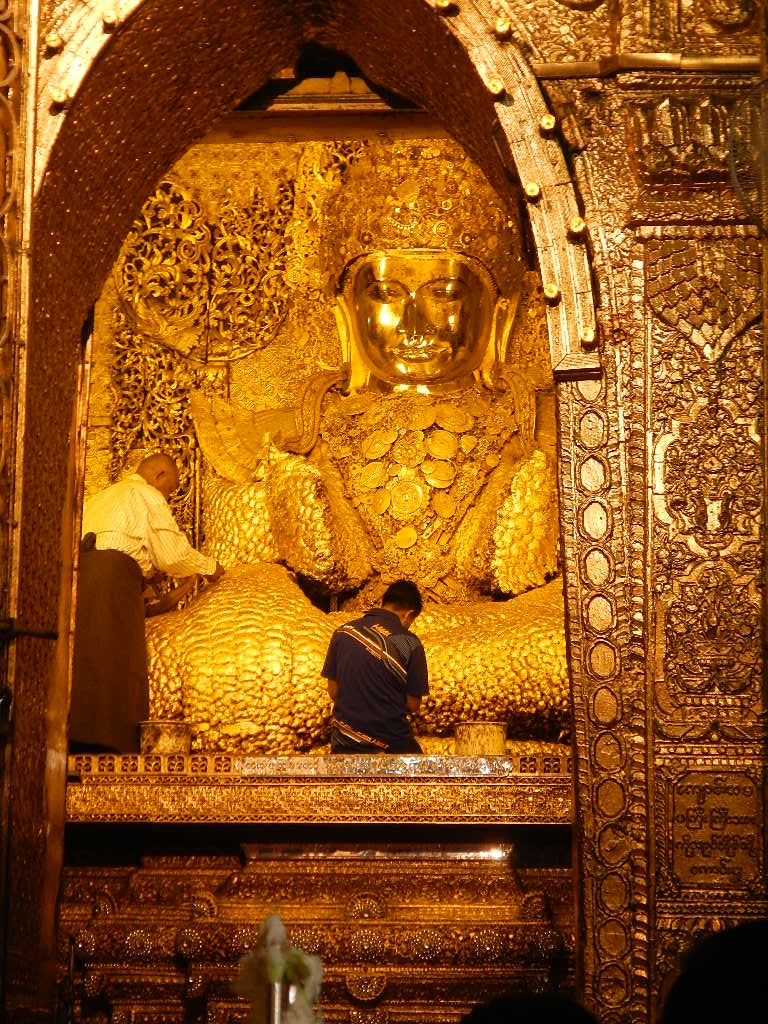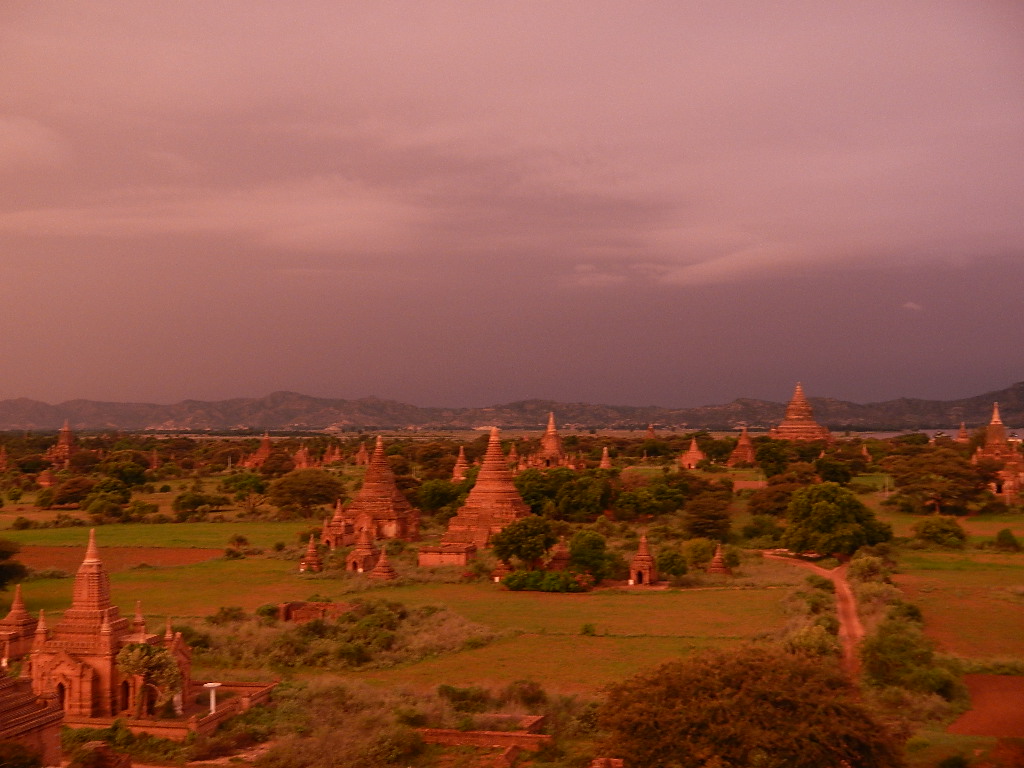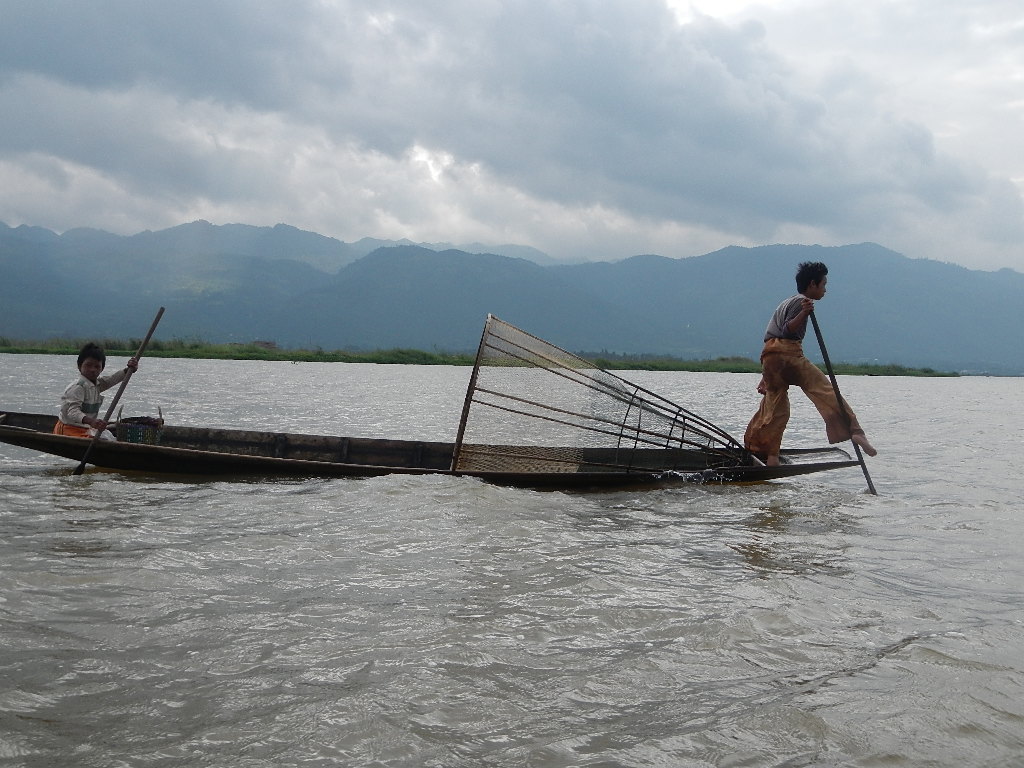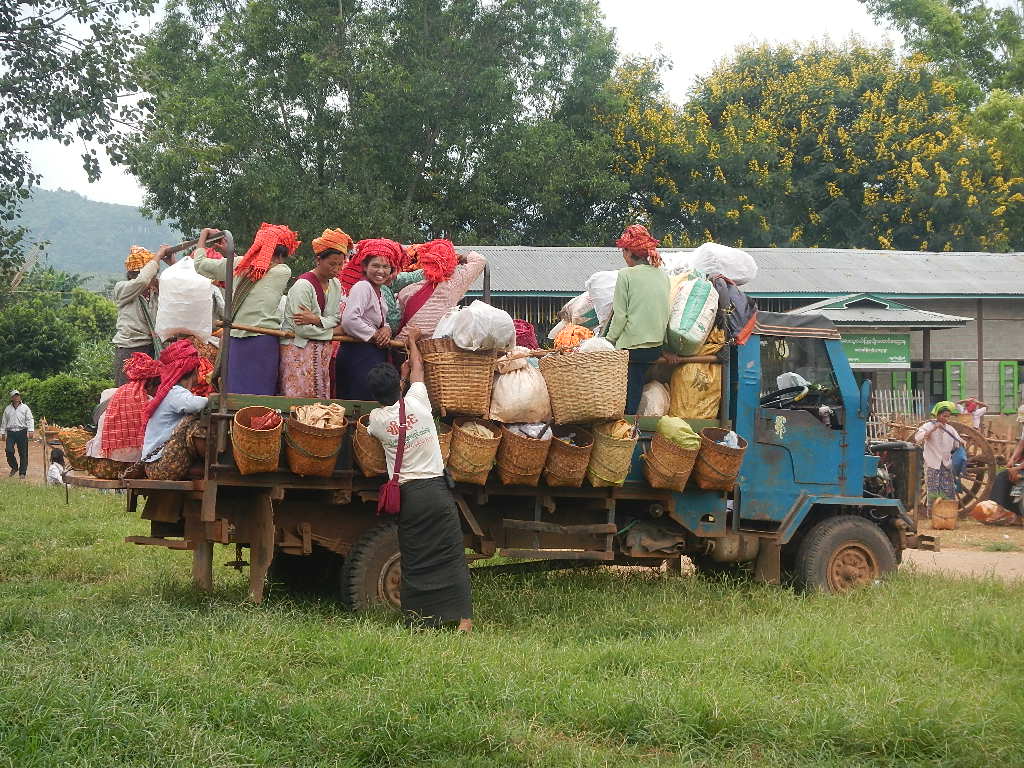A country in the midst of a political transition and geographically placed along the Himalayas, sharing borders with India and Bangladesh and linking a “Golden Triangle” with Thailand and Laos, Burma, now Myanmar, is a fascinating country with the friendliest people in Asia.
Yangon
I stay near the Sule Paya, a golden pagoda set in the middle of a busy traffic intersection. The first thing I do upon landing is head to the bank to exchange my uncreased, unmarked US $100 bills that originated after 2006. Foreign credit cards are not accepted in the country and the banks and black market are extremely particular about foreign currencies. After this extraneous process, I wander Yangon, weaving my way through the activity on the sidewalk; the plastic stools where men drank tea, the noodle stands and the open aired markets. Men use wooden crates to make their “cheroot”, betel nut and chewing tobacco rolled in leaves. I continue on to the infamous Shwedogan Pagoda, said to house eight hairs of the Buddha. The Pagoda is breathtaking at sunset, as the tower turns crimson and the monks begin their chants. A group of monks came over to practice their English and one spread his arms and said, “I wanted to thank you for choosing to come to my country, and welcome to Myanmar!” That would be the beginning of many welcoming gestures from the Burmese people.
Bagan
We pull into Bagan at 4am just in time to see the monks, dressed in crimson robes, walk the town for the morning alms. We are greeted at the bus station in the pitch black with horse-carts. Sitting on a wooden crate on wheels being dragged around town by a horse, I feel as if I have found the wild wild west. At 5am, we take bikes and flashlights and set out to the city of temples, finding one, in time to see the sky change from black to purple to a light blue, and then slowly a golden orange, as the sun began to seep through the valley, illuminating each temple as it went. It is calming, majestic, and even spiritual. After a day of biking through the temples, I hop on a bus to Inle Lake.
Inle Lake
Inle Lake thrives with communities of villages that use it as a life source. It serves as a transport hub, with wooden canoes lining the canals to enter the lake each day. Villagers go to work by the lake, boats take children to school each morning and businesses moving goods, ship their items over water. It’s a source of food, with floating gardens and farms, and fishermen who wake in the early dawn. Its a religious center, housing floating temples and pagodas. And it serves as a town center, with floating markets bringing the villagers together each day to buy food. Craftsmen’s stilted stores line the lake, preserving age old professions like blacksmiths, weavers, seamstresses and basket makers. Each day comes to a close in Inle with a boat full of monks floating by, doing their evening chants. I fall so in love with Inle that I choose to ignore the creeping influx of tourist offices and western restaurants.
Mandalay
North of Inle, lies the busy, noisy, congested, dusty city of Mandalay. The city’s grid system is set up around the Mandalay Palace, the last royal palace of the Burmese monarchy. I visit the Mahamundi Buddha, a large Buddha painted in gold every day, and the historic teakwood Shwenandaw Monastery. On the way, my taxi driver is eager to discuss the political situation in Myanmar. With the release of Daw Aung San Suu Kyi, the country is at a crossroads and, as the US lifts some economic sanctions, tourists continue to flow in. This transition is seen in Mandalay’s financial distract, as men go to work wearing a dress shirt and tie, with a longyi, the traditional cloth wrap, on the bottom.
Although the country is undergoing rapid changes, it’s essential to preserve the centuries old customs and traditions that make Myanmar such a unique cultural gem.
~ By guest blogger, Tess Murphy. Tess has traveled extensively through Europe, Asia and Australia, keeping a travel blog everywhere she went.



